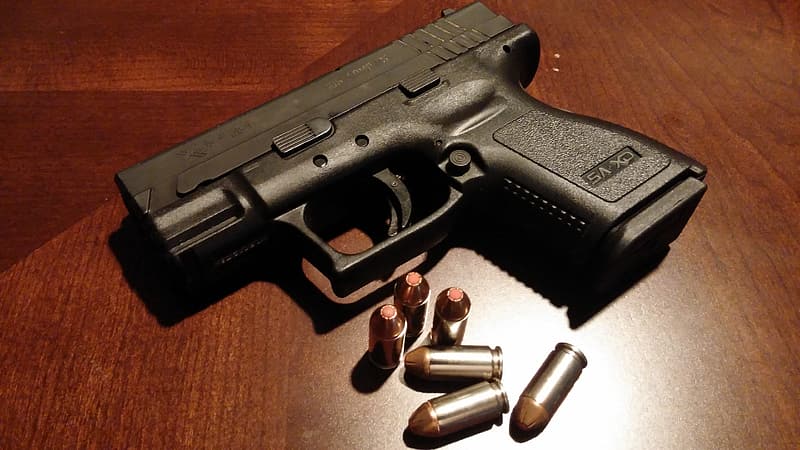Gun violence is a leading problem in the United States, which is the primary reason why it’s not among the safest country in the world. Compared to 22 other high-income nations, the gun-related violence in the US is 25 times higher. So this poses the question, is the increasing cases of gun deaths in America caused by people’s aggression? Or is aggression increased by the availability of guns? The weapon’s effect is the theory that states that aggression levels increase just by being in the mere presence of firearms.
When discussing the psychology and impact of firearms, it’s essential to consider the various types of firearms available today. One such example is the https://icbfirearms.com/firearms/rifles/ar-15-rifles/, a versatile and widely used firearm. If you’re interested in exploring AR-15 rifles and their specifications, you can find more information at ICB Firearms. This can provide you with valuable insights into this particular firearm category
The Weapons Effect Theory
Weapons effect is a controversial theory debated in the field of social psychology, but there’s a lot of research that has supported it. This effect was first described in the 1967 paper “Weapons as Aggressions-Eliciting Stimuli” by Leonard Berkowitz and Anthony LePage. The authors conducted the study at the University of Wisconsin. The researchers called up 100 male university students for one in-laboratory session.
The participants were seated at a table that had a shotgun and a revolver on it. For the control group, they are seated at a table with badminton racquets and shuttlecocks. The researchers said that the items were part of an experiment that they have supposedly forgotten to put away. The students were randomly assigned to receive either one or seven shocks and were told that these shocks came from a peer. After this, the researchers allowed the students to give as many shocks as they wanted to their peers. The experimenter told the participants to ignore the items on the table, but apparently, they cannot. The greatest number of shocks was given by those who received seven shocks when they were in the presence of the weapons. It concluded that the participants who saw the guns were more aggressive than the participants who saw the sports items.
The researchers manipulated a few things: the stimuli that were present in the room (guns and badminton equipment) and how many unpleasant shocks each participant received (to trigger and anger them). The variable they were interested in was how many shocks the subjects attempted to give in return. Generally, neither of the seven shocks nor the gun has caused the participants to try to shock their peers, but when the two variables were put together, the subjects became more likely to try to return the shock to their peers. This makes a lot of sense when you’re talking about aggression.
Related Studies
Several studies replicated the weapons effect theory. One of which was published in 1975, when the original weapons effect was studied cross-culturally in a Swedish population by Ann Frodi. She also extended the work to examine other possible stimuli that may have aggressive-stimulating connotations or aggressive-inhibiting connotations. Frodi used a similar study design, with 100 male high school students as participants who are either heavily angered or not by whom they thought was a peer. The participants had either no weapons, weapons, or a baby bottle on the table near the shock key. The baby bottle was used as an aggressive-inhibiting stimulus. Frodi found that the who were participants exposed to weapons gave the greatest amount of shocks. But unlike the findings from the original study, there was no significant difference when it comes to numbers of shocks given and those who were angered and those who were not.
Research also indicates that drivers with guns in their cars are more likely to drive aggressively than those without guns. A representative sample of more than 2,000 American drivers found that those who have a gun in the car were more likely to make obscene gestures at other drivers, or aggressively follow another motorist too closely even after controlling for other factors related to aggressive driving (such as gender, region, age, urbanization, and driving frequency).
Besides inspiring multiple replications, Berkowitz and LePage’s weapons effect study has received major criticism. In 1971, a study did not find weapons to be an aggression-eliciting stimulus by conducting an experiment that allowed 104 participants to shock a research assistant pretending to be another person after receiving no shocks, two shocks, or eight shocks. This created a mixed reaction – some were angered, and some were not, regardless of the presence of a weapon. Another study also found that individual differences play a major role in whether or not the weapons effect would be found. More sophisticated individuals are less likely to be aggressive than less sophisticated individuals.
Conclusion
With the mixed results and conclusions from different studies of weapons effects, it’s not clear if this line of research will extend to support or be against gun control laws. Also, the ethical standards at the time of the study were not as strict back then as they are now, because the participants actually received shocks. The theory cannot be tested perfectly because it’s not ethical to conduct it.
The original research was criticized by a conservative think tank that is more likely to be gun owners and wants to protect their rights to own guns. Gun proponents argue that the real causes of gun violence are TV shows, movies, and video games.
So far, the evidence to support the weapons effect is weak to the extent that it doesn’t have much to say about conclusions outside the laboratory. Also, aggression is subjective, and it’s all a matter of context.
